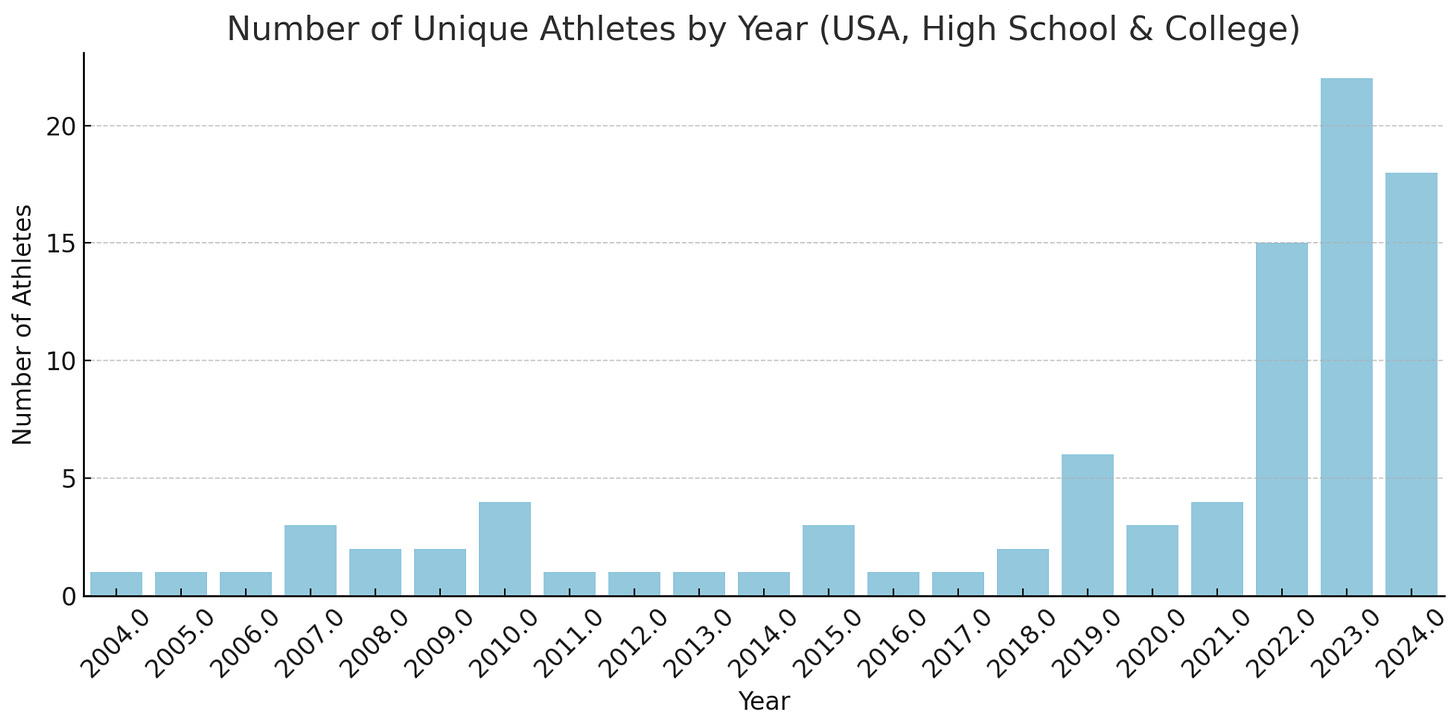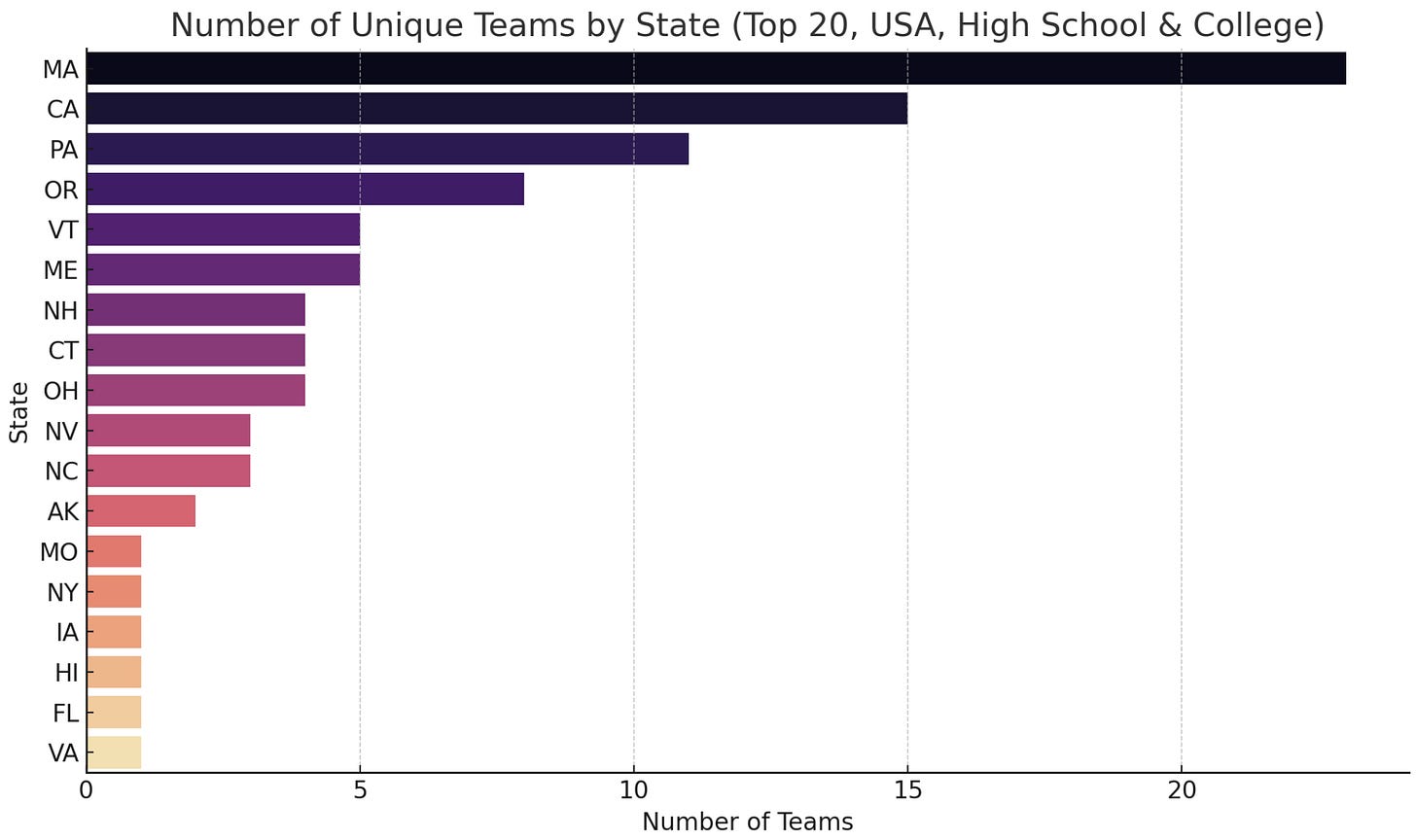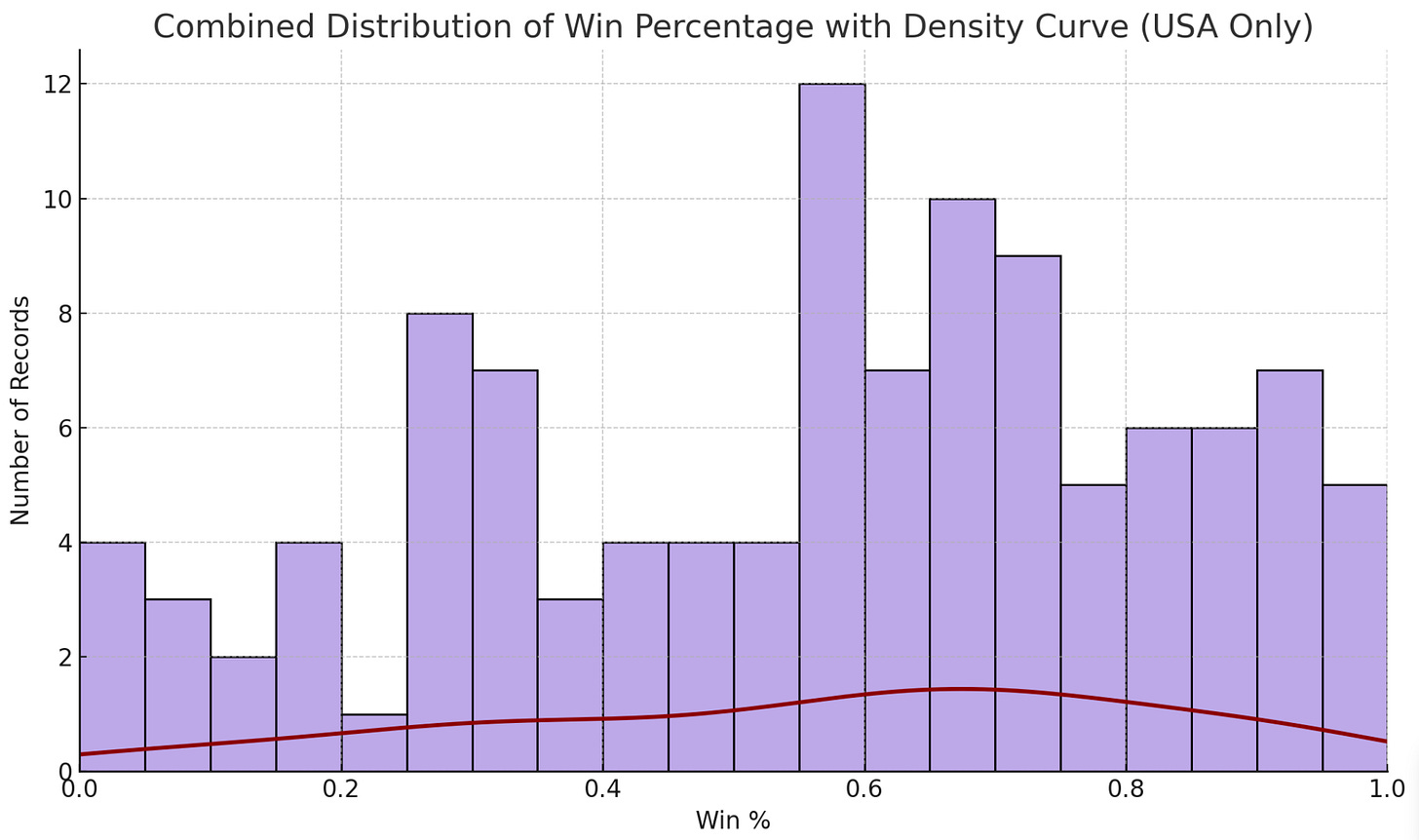Last month, a Minnesota high school softball team won the state championship behind a seven-inning shutout thrown by their pitcher, a biological male competing under the name "Marissa." The team, which had previously struggled, suddenly surged to a 20-2 record. It was the kind of Cinderella story that sports media usually celebrates—except this one hinges on the uncomfortable and increasingly politicized reality of male athletes playing on female teams.
The common rejoinder is familiar: trans-identifying athletes comprise a tiny fraction of competitors, so why all the fuss? Aren’t these debates just veiled prejudice against trans people? Exclusion is bad! Well, no- the only way single-sex leagues exist at all is due to exclusion. Cases like this underscore what many already know intuitively: putting a biological male in a key role on a girls' or women's team fundamentally alters the competitive landscape. That this even requires debate—after a raft of executive actions, legal challenges, and the much-publicized controversy at UPenn—speaks to how disconnected our institutions have become from basic truths about athletic fairness.
Despite our culture's obsession with sports stats—from ESPN to fantasy leagues to sports betting apps—there is a striking absence of institutional effort to track the presence and impact of males competing in female categories. The NCAA doesn’t. ESPN doesn’t. Nor do the major professional leagues. This statistical void isn’t accidental; it's political.
If not for the brave people behind HeCheated.org, who dedicate their time to track as much of the occurrence of men in women’s sports, we would not be able to quantify. As a disclaimer, while the data from hecheated.org is as thorough as possible given how much of the narrative and political climate suppresses truth- it is not exhaustive and is most certainly an under-count of the occurrence. When individuals face harassment and threats and are being removed from games where male players are included- we know that the full scope of the problem is still much worse.
Let’s start with incidence: the number of known male athletes competing in female team sports has risen steadily over the past few years, particularly in high school and college. The patterns aren’t random; they follow the incentives. Males are overwhelmingly placed in high-impact roles—pitchers, forwards, sprinters—positions where strength, speed, or endurance provide the greatest marginal advantage.
Here’s a Breakdown of the Number of Male Athletes by Sport.
Here’s A Ranking of States by How many Women’s Teams include Male Players.
Deeper Analysis: Win Percentage of Teams with Male Players
When we look at something like team win percentages, there's a specific statistical pattern we often expect to see, especially when we have a good, large collection of teams. This pattern is called a truncated normal distribution.
So, when you have a good sampling of teams – meaning enough teams playing enough games in a well-structured league – you'd generally expect their win percentages to settle into this kind of truncated bell curve. What that means for sports is simple: the vast majority of teams would be clustered around an average win percentage, playing at a pretty similar level. There would be fewer teams at the very top (the dominant, almost undefeated squads) and also fewer teams at the very bottom (those winning very few games). Crucially, the number of teams at the top extreme would roughly match the number at the bottom extreme, showing a natural balance of competition where excellence and struggles are both present but less common than solid, middle-of-the-pack performance.
Here’s and example of such a distribution from The Sport Journal that reflects the distribution of win percentage in Collegiate Women’s Lacrosse. As you can see, it’s a pretty standard smattering of win percentages all around the middle with fewer towards the extremes. With a balanced distribution of teams both above and below that average win mark.
Compare the previous with the distribution of win % for Collegiate and High School Women’s teams with men.
Distribution of Win % for Women’s High School and College teams with Males
Looking closely at both graphs, the Distribution of Win % for Women’s High School and College teams with Males has a noticeably larger proportion of its "records" (teams) with win percentages above 50%. The clustering of teams on the upper end of the distribution- with 54 teams having win % over 50%, and 24 teams below 50%. The implications are obvious: inserting a male athlete into a female roster, particularly in a key position, confers a consistent competitive edge.
All of this to say- it actually should not matter what impact to overall performance a male player has on female teams, as it’s still unfair and against the entire point of female only athletics.
Though we’re seeing progress, as with the US Olympic Committee now claiming it will comply with the Law and President Trump’s executive order, there’s still much work to be done in courts, State-level associations, and local schools across the country to end the men-dominating-women-in-sports movement. When institutions abdicate the responsibility to count, to track, to assess impact, it falls to private citizens to do what entire leagues and governing bodies refuse to. The numbers may be incomplete, but the pattern is clear. Fairness isn't just being compromised—it's being erased.
Sources:






